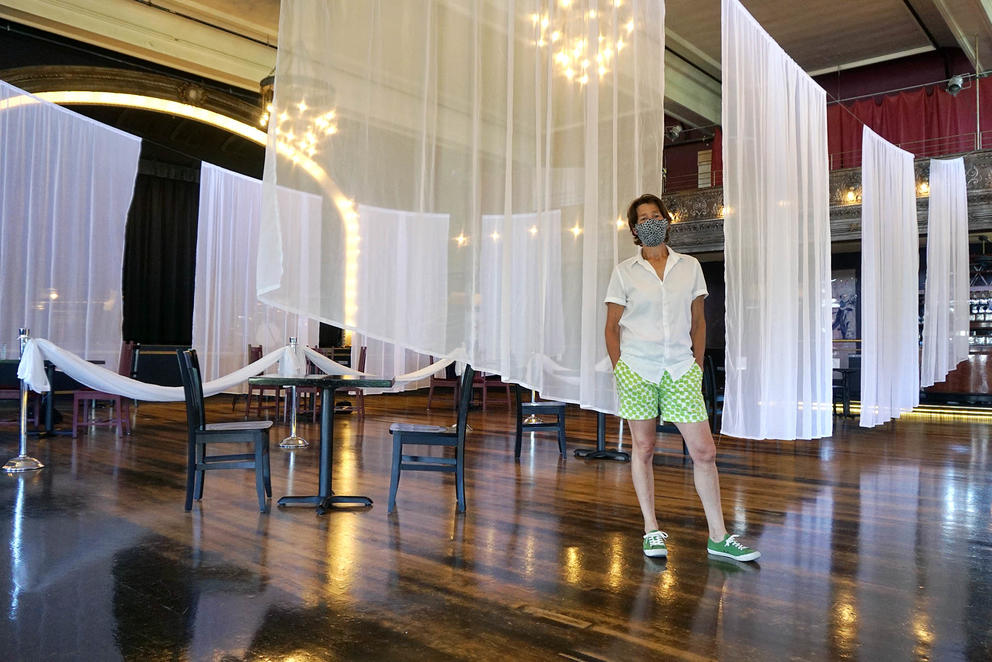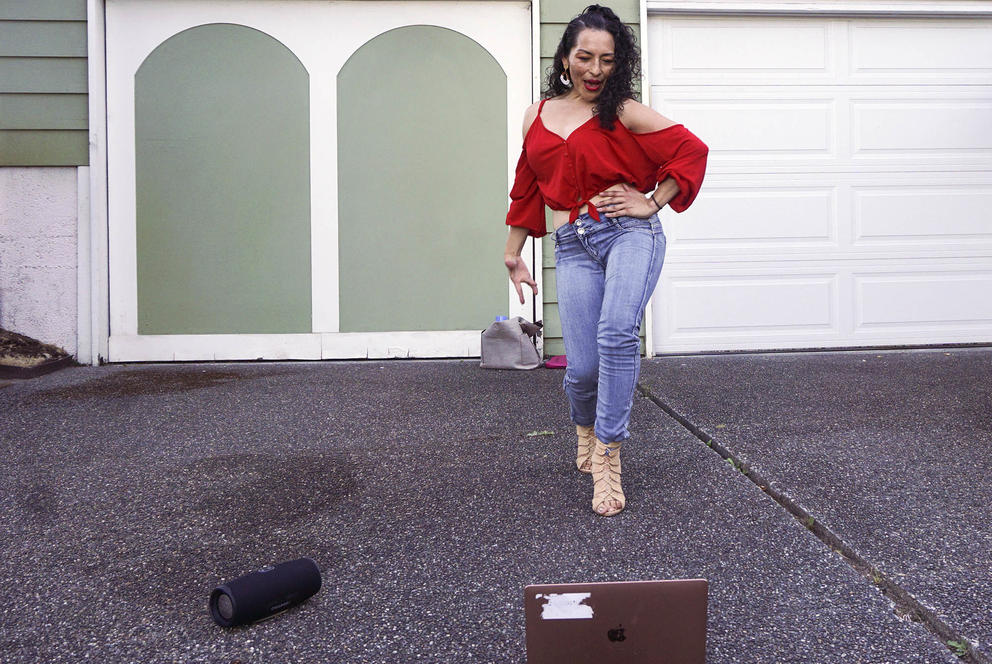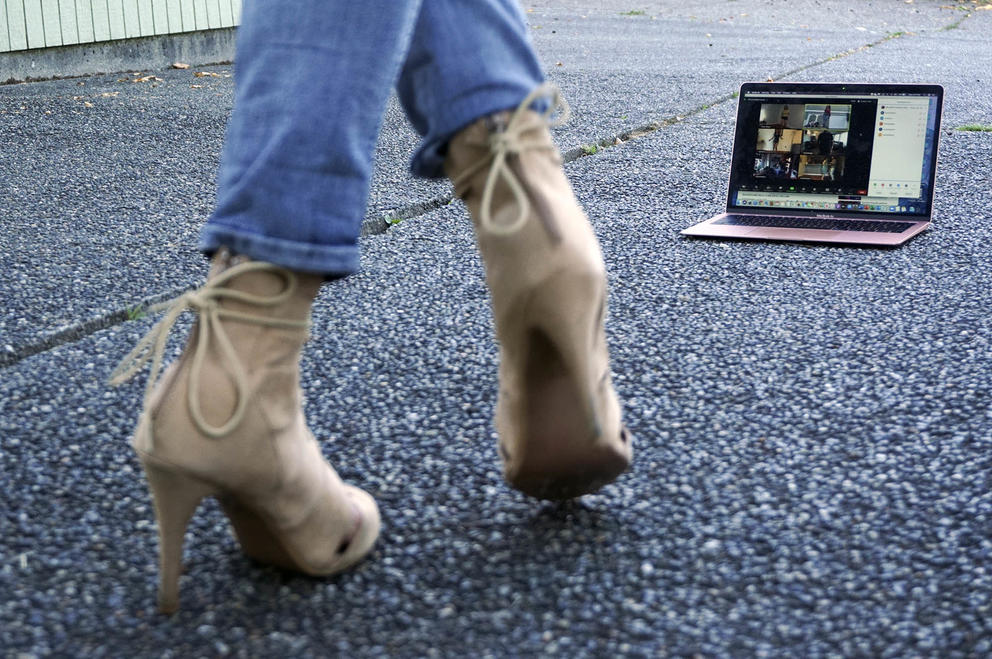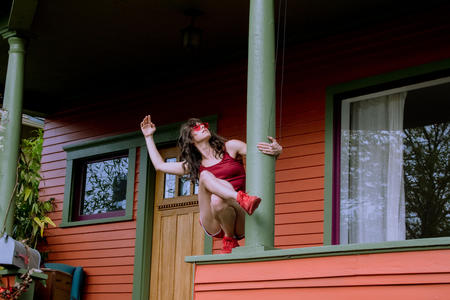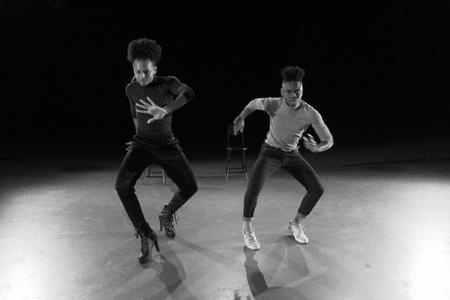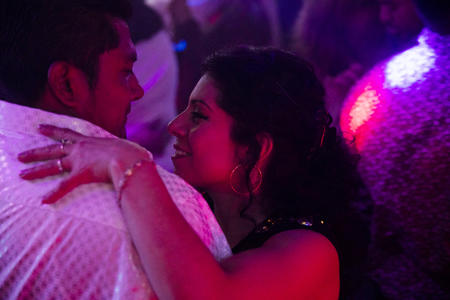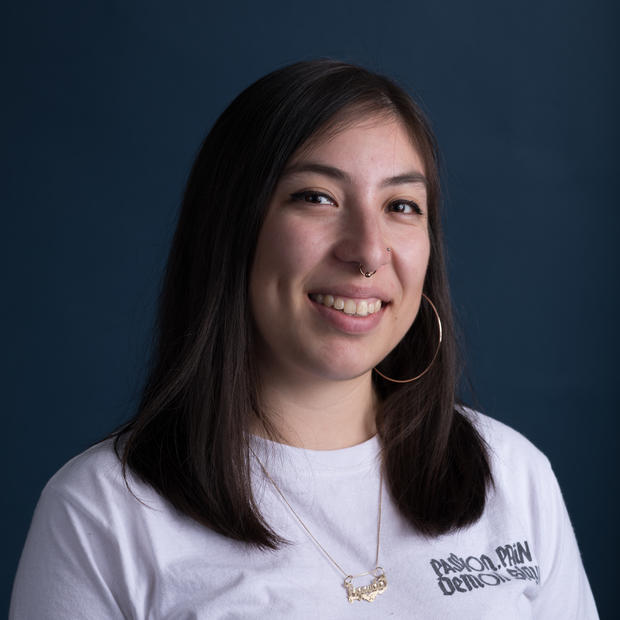With no set date for when people can resume partner dancing, Mclean realizes how lucky he was to have dancing. The 25 year old, who used to teach kids how to dance at Coyote Central, is a Lindy Hop ambassador for the Frankie Manning Foundation (named after the godfather of Lindy Hop), which is devoted to keeping the dance alive in Black communities. He says Lindy Hop helped him connect with both his cultural identity and with other people.
“Dances that were done by a culture that has a history of oppression were shaped over time to be releasing, to invigorate the spirit, to gather in safety with each other,” says Mclean. “To lose that all of a sudden really makes you feel very isolated from the world.”
Disconnection is a feeling experienced by many devotees of partner dancing, who lost touch with a special passion when dance venues, lessons and studios closed because of the coronavirus pandemic. That loss is doubly felt by those who’ve turned their passion into a business — such as the owners of Century Ballroom, Salsa on Alki and Balorico Dance. The owners — all dancers themselves — must reckon with the fact that partner dancing isn’t coming back anytime soon.
Century Ballroom held its last dance on March 13, about a week before Gov. Jay Inslee issued his “Stay Home, Stay Healthy” order. Partner dancing was an obvious no-go under the new restrictions. By the first week in March, attendance at the 23-year-old venue’s classes and public bachata, salsa and swing nights dwindled.
In a normal week, upwards of 1,500 people would step through the elegant terra-cotta entrance of the Oddfellows Building, and walk up the stairs toward Century Ballroom’s 4,500-square-foot dance floor. The main dance hall boasts two chandeliers and is surrounded by deep red curtains and a baroque-style balcony, where lion heads hold light bulbs in their mouths. But no matter how glamorous, a place where people taking lessons switch dance partners every three minutes, grab each other's hands, breathe in and out with the rhythm as they shimmy close together is clearly ripe for virus transmission. It happened in Detroit, where the coronavirus swept through the ballroom dance scene, and may have resulted in the death of an estimated 10 to 30 participants.
“At this point, there are very few circumstances that I think people would feel comfortable going out in that involves touching people they don’t know,” says Hallie Kuperman, Century Ballroom’s founder.
Before COVID-19, Kuperman led tutorials during public social dances. She would have her students surround her in a big circle to watch her perform the basic steps to salsa, swing or whatever that night’s dance lesson was. Afterward, people would go around the circle, practicing with different partners, pressing their hands and bodies together.
“I miss teaching,” says Kuperman. “I miss laughing. I miss being goofy and having people laugh and having people learn.”
Under Inslee’s current phased approach to reopening the state, dance venues wouldn’t be able to open until Phase 4. With the number of COVID-19 cases currently rising, it could take a long time to arrive there.
“Dancing is magical, it's physical, it's one of those things that you do that you can't do anything else while you're doing it,” Kuperman says. “You don't think about anything except for the person that you were dancing with, so it’s pretty special in that way.”
Until her beloved space is able to reopen, Kuperman is grasping at ideas for a future without social dancing. Perhaps the Century Ballroom will do seated dance shows, she says, maybe dinner and a movie? Eventually, perhaps, people will have to commit to dancing with just one partner to participate in a class.
For now, Century Ballroom offers limited dine-in service through its sister restaurant, The Tin Table. White fabric now divides the grand dance floor where people once gathered to cha-cha, jitterbug and jive. “I'm going to have to revamp what we do for a while,” says Kuperman, who notes that Century Ballroom isn’t offering instruction online because the social aspect of social dancing is crucial. But she says that when social dance does come back, if a mask is a must, then so be it.
For Jim Chow, owner of Belltown Dance Studio, dancing with a mask is not ideal.
“Actually it's really uncomfortable with a mask — I tried it,” Chow says. “It’s really hard to breathe, you’re moving so fast and you feel like you're holding your breath.”
Salsa took hold of Chow's heart so long ago that he has lost count of the years. The salsa teacher credits his passion for dance to the Century Ballroom, where he learned the six-step dance some 18 to 20 years ago. In 2005, he founded Belltown Dance Studio to share his love of the form with others. Eleven years ago, Chow started to host his own event for partner dancing, Salsa on Alki, a series of public dances at Alki Beach Park near the Statue of Liberty there. Hundreds of people would show up over the course of the summer to dance as the sun set.
But this year it was over before it started; the social dance events (which often started with a quick tutorial by Chow) are on hold until the COVID-19 outbreak is under control. As is finding a new space for Belltown Dance Studio.
“Until we get to Phase 4, I don't feel safe to even consider it,” Chow says.
Since COVID-19 shut down large social gatherings, Chow says any and all businesses that depended on dance were “cut off at the knees.” On March 15, he vacated Belltown Dance Studio. “I'm still obsessed with it [salsa],” he says. “I love it as much as the first day. It's a huge passion of mine. And to have it come to a dead stop is pretty painful ... physically, mentally, emotionally. I'm sure I speak for a lot of people in that department.”
He now teaches private lessons online from home. It took Chow a couple weeks, but he adapted.
“It's tricky because the interaction is delayed, the music is delayed, and sometimes you cannot see them and they cannot see at a certain angle,” he says. “I think people are willing to make sacrifices because we just love to dance. We hope things will turn around slowly but surely.”
Balorico Dance in West Seattle is also adapting while waiting for the day in-person classes can be a reality again. Owner Vanessa Villalobos has offered traditional partner and ballroom dance classes at her West Seattle location since 2009. She also taught a popular children’s salsa class in Renton, and recently began offering Latin dance classes in a new space on Capitol Hill. But suddenly, she’s had to convey the pulse of Latin rhythm virtually.
“There was some hesitation to transfer over to digital, so I think it was very slow to start,” Villalobos says. “People were kind of feeling like they wanted to decompress in other ways, being off screen, but now that it seems that it's more of an accepted normal, I'm definitely seeing an uptick in the interest.”
On a positive note, the dawn of the digital ballroom dance era has brought Villalobos new clients — she’s seen students from out of state start to log on to learn to dance. While she’s happy for the wider reach, she emphasizes that distant dancing can never replace the real thing.
“I can feel the angst of folks really wanting and desiring that physical connection,” Villalobos says. “There's something special that happens when you're dancing. When you come together with another body to dance at the same time to music, it's a different level of communicating and connecting, and it really feeds your mental health.”


